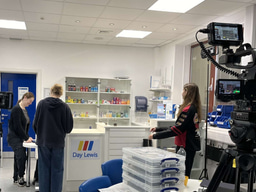January 2025 market update: First-time pharmacy buyers rocket as GP investors enter the market

First-time buyers have “dominated” the market after completing 53% of pharmacy sales across England, Scotland and Wales, according to Hutchings Consultants’ 2025 UK pharmacy market update.
The data looks at all pharmacy sales completed through Hutchings in 2024.
First-time buyers share of the market has increased since 2023 when they accounted for 38% of sales, as existing pharmacy owners and group owners now both share an equal 22.5% share of the market, a decrease from 30% and 32% in 2023.
Read more: Revealed: Number of would-be first-time pharmacy buyers shot up 91% last year
The broker’s analysis also showed investor buyers, buyers from outside of pharmacy and other healthcare related sectors, accounted for 2% of sales, with Hutchings confirming all of the investor deals involved GPs as the buyers.
The report’s author, Hutchings associate director Paul Steet, said “overall pharmacy buyers’ confidence remained high throughout the year” after it predicted in last year’s report that “pharmacy sale transaction volumes would remain relatively high”.
Read more: England’s pharmacy market analysed: “A few drugs can make the difference in making a profit”
He says this was helped by large groups and multiples such as Rowlands, Boots, and Well continuing to sell “poorer-performing or outlier branches as part of strategic portfolio reviews”, as well as additional income coming through from the Pharmacy First scheme in England.
First-time buyers “dominated” new buyer registration again this year with 79% overall, but the total number of registrations fell 46% “as expected” after an “unprecedented level of pharmacy disposal and acquisition activity experienced in 2023”.
Bank funding
Steet says first-time buyers may have accounted for a higher percentage of purchases over the course of the year if there was not “high loan repayment costs paired together with targeted acquisitions showing low profitability” as this caused problems to source bank funding.
Buyers continued to “rely heavily on banks” to support purchases but had “understandable concerns around rapidly increasing Bank of England interest rates impacting business loan costs”, with the base rate peaking at 5.25% before reducing to 4.75%.
Less than 5% of sales were done on a “cash deal basis” in 2024, only up from “around 2%” in 2023 according to Steet, as financial pressures in the sector along with an increase in administrator led sales led to “some heightened cautiousness from lenders”.
He added that an emerging trend of “joint venture activity between this specific group of buyers and more experienced, financially secure group owners has aided some in overcoming these funding hurdles in the current lending environment”.
Goodwill values and gross profit margins
The UK average goodwill values improved with £0.81 paid per pound of turnover in 2024 compared to £0.78 in the previous year, as the Scotland independent sales average increased to £1.52 from £1.41.
England’s average ranged between £0.31 to £1.08, with Wales’ ranging between £0.39 to £0.80.
Hutchings recommends pharmacies to “keep a strong focus on improving their margin where possible” as Scottish pharmacies continued to outperform those in England and Wales with its average gross profit margins.
Read more: Four things to know about the pharmacy sales market
Scotland’s average for 2024 was 35.8%, slightly down from 2023, but higher than 32.2% in Wales, which was an increase from the previous year. The England average decreased from 34.9% to 32.7% for 2024.
Steet says that embracing the Pharmacy First schemes in England and Scotland and the Common Ailments Scheme in Wales was recognised as a way to “continue trading profitably” as issues continued with the supply and cost of drugs and declining levels of NHS reimbursement for dispensing.
2025 predictions
The report says the “supply of pharmacies entering the market to remain steady” as multiple and group operators continue to implement “streamlining plans”, and average goodwill prices will “remain relatively steady”.
It also predicts pharmacy buyers’ confidence will remain “positive”, and it hopes Bank of England interest rates will “remain steady or fall further” too.
Read more: Podcast: Christie & Co Annual Market Review 2024
Hutchings expects community pharmacy’s future will become “a little clearer” once the NHS 10-year plan is announced, but stressed an outcome to the community pharmacy contractual framework (CPCF) negotiations was needed as pharmacy profitability will “remain under pressure with inflationary and cost of living issues”.
Agreement on the CPCF funding should “positively affect market sentiment and goodwill values” the broker added.
Read more: Podcast – the state of the pharmacy market in 2023
It comes as chartered accountants UHY Hacker Young (UHY) revealed this week (January 6) that 1,212 pharmacies were bought in the UK from July 2023 to June 2024, up 50% from 809 in the previous year.
The transactions include some of the 1,054 community pharmacy sales from Lloyds Pharmacies, and further research showed there has been a “10% decrease in Gross Profits per pharmacy, now down to £382,468 per year from £419,598”.
The research estimates this is “a hit of approximately £500m” to community pharmacy profits compared to the previous year.
UHY partner John Ierston says the rise in sales demonstrates “lower gross margins under the NHS contract” and that “rising wage costs due to the cost-of-living crisis, changes in minimum wages and national insurance rates are squeezing margins”.







Please sign in or register for FREE
If you are a registered user on C+D Community, please sign in